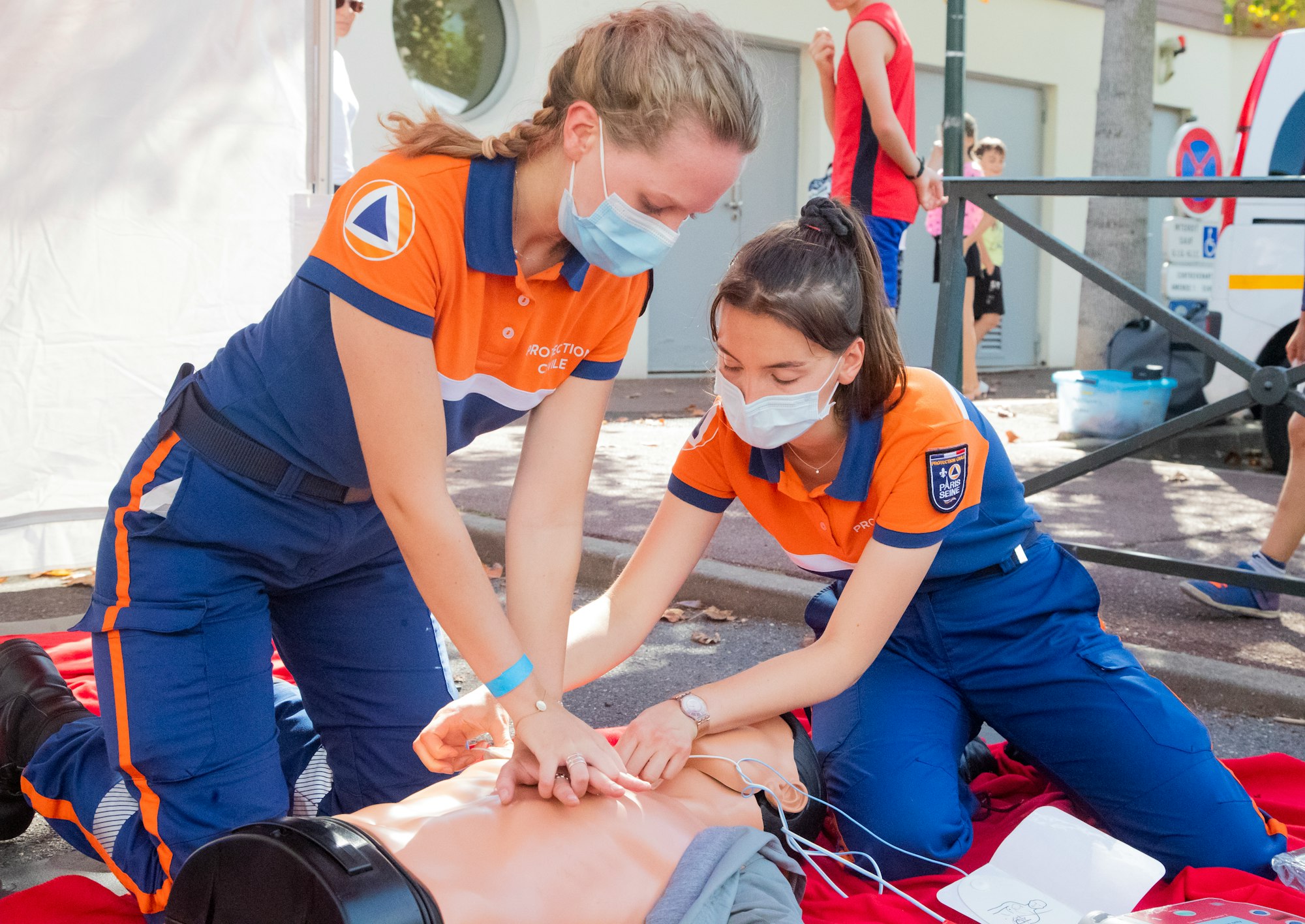How to Interpret & Read EKGs Like a Boss: Master Heart Rhythms

In this post, we’re going to learn all about heart rhythms, so the next time you do an electrocardiogram (EKG/ECG), you’ll know what’s going on. This post can also come in handy if you plan to work on a nursing floor with telemetry, or if you plan on taking advanced cardiac life support (ACLS), as you will need to be familiar with heart rhythms.
When you do a 12 lead EKG, you’ll get 12 different views of the electrical activity of the heart, but for this review, we’re going to be focused on lead II, which is the most commonly used diagnostic lead, and the one that you need to be familiar with.
Heart rhythms
Normal sinus rhythm
Let’s start with a normal sinus rhythm. On the top half of the graphic below, we see all the necessary elements of a sinus rhythm. Every sinus rhythm needs to have a P, Q, R, S, and T wave, and only one of each per complex. If any of these waves are missing or if there are extras, you are not looking at a sinus rhythm.
NSR complex

Interval Timing
- P-R interval = 0.12 - 0.20 sec (3 - 5 small squares)
- QRS width = 0.08 - 0.12 sec (2 - 3 small squares)
- Q-T interval 0.35 - 0.43 sec
NSR strip example

The next thing we need to figure out is the heart rate, and there are a few ways to do this. Normal sinus rhythms are anywhere in the range of 60-99 bpm.
On the bottom half of the image above, we see that the rate is around 1 beat per second. How do I know? Check out the boxes in the background.
Each larger box represents .2 seconds. If you measure between the R waves (also called the R-R interval), you will see it’s close to 5 boxes in between, which would put this person’s pulse around one beat every 1 second, or 60 beats per minute (bpm).

Another way to quickly guestimate the heart rate is to multiply the number of R waves that you see by 10. This is because most strips are a 6-second window in time, and by multiplying 6 by 10 we get 60 seconds. Here’s an example of how to guess the bpm:

We see 7 R waves in the image above, so we’d assume that this person’s heart rate is around 70bpm. This second method is faster but less accurate than measuring the boxes and calculating the R-R interval.
Sinus bradycardia
Sinus bradycardia is almost the same rhythm as normal sinus (all the same wave parts), but slower, with a heart rate less than 60bpm. Here’s an example of a brady rhythm:

Using the box method, it looks like almost 6 boxes between R waves. That would put the rate at 1 beat every 1.2 seconds or 50 bpm (60 / 1.2 = 50).
We cannot use the guestimation method here, because this is not a 6-second strip. In fact, it’s about a 3-second strip, so that would put us around 60bpm which would just be normal sinus rhythm… so you can see why this method is not as accurate, and on a test, you’d have gotten this question wrong if you used that method.
Nursing considerations for sinus bradycardia involve monitoring the patient for negative symptoms, which we would call symptomatic bradycardia. These include lightheadedness, passing out (syncope), chest pain, dizziness, hypotension, etc. In extreme cases, the patient may require external pacing or inotropic drugs like atropine to increase the heartbeat.
Sinus tachycardia
Sinus tachycardia is also almost the same as normal sinus (all the same parts), just faster, with a heart rate of 100bpm or greater, usually up to around 150. Here’s an example of sinus tach:

We can see that this rhythm has a P, Q, R, S, and T wave, so it’s sinus, but the rate is fast. It looks like a little more than 2 large boxes between R waves, let’s say about 2.2 boxes between. 2.2 large boxes equals .44 seconds (2.2 x .2 = .44). If we have a heartbeat every .44 seconds, then we’re looking at 136bpm (60 / .44 = 136).
Using the guestimation method, we count 13 R wave complexes, putting the heart rate around 130.
Nursing considerations for sinus tachycardia are to monitor the patient for being symptomatic. Patients can become hypotensive, light-headed, dizzy, experience syncope, or develop a more insidious rhythm. These patients may need beta blockers to slow the heart rate, or treatment of the underlying cause which could be inadequate pain control, or hypotension, for example.
Supraventricular tachycardia (SVT)
While we’re on the subject of tachycardia, I want to cover what generally happens when we exceed 150bpm.
At this speed, the P and T waves get overlapped onto each other, and so rather than seeing a distinct P and a distinct T wave between R waves, we see only one hump instead of two. SVT will always have a lack of a distinct P wave.

In this example, it looks like the R-R interval is 1.6 boxes, or .32 seconds (1.6 x .2 = .32). That would put the rate around 188bpm (60 / .32 = 187.5).
Using the guestimation method, it looks like 18 R waves, so that would put the rate around 180.
Nursing considerations are once again monitoring for symptoms and duration of the dysrhythmia. SVT can be treated multiple ways and really depends on whether or not the patient is stable or unstable. Unstable would be any loss of consciousness, hypotension, etc.
If the patient is stable, the first recommendation is to have them perform a vagal maneuver to attempt to slow the heart rate down. If that doesn’t work, and if SVT were to continue long enough, the patient may require adenosine to slow the heart and attempt a reset to a normal rhythm. If the patient receives adenosine, expect a massive pause in the heartbeat, which occurs during the “reset” period, and can last a few seconds.
If the patient is having unstable SVT, they would probably require transcutaneous pacing via synchronized cardioversion to slow the heart rate. A good way to remember how to treat SVT is “Stable vagal, unstable cable,” where cable means to hook the patient up to the monitor/defibrillator and cardiovert them.
Ventricular tachycardia (v tach)
So far we’ve only seen narrow QRS complexes, but if the complexes become wide and the rate is >120bpm, then we’re looking at v tach. Here’s an example:

Look at that beautiful deadly rhythm. This is a fine example of monomorphic v-tach, meaning the complexes are all the same, but it could also be polymorphic if the complexes change in shape. We can see a lack of defined P and T waves, and basically only see giant wide QRS complexes.
The rate between R waves looks like 2 boxes or .4 seconds (2 x .2 = .4). That puts the rate at 150bpm (60 / .4 = 150).
Ventricular tachycardia can be a lethal rhythm, and a patient in v tach can either be pulseless (dead) or with a pulse. Therefore, you may find them conscious or not, and depending on the presence of a pulse it will be treated differently. If there is no pulse, we’re looking at a code blue situation, and you’ll need to run for the defibrillator and start CPR immediately.
Ventricular fibrillation (v fib)
Similar yet different to v tach, v fib is 100% a deadly rhythm, because you will never find a pulse. It lacks regularity, and all P, Q, R, S, and T waves are absent. The heart is literally just convulsing without reason.

I tried to pick a good example that doesn’t look a lot like v tach, because sometimes they look similar. In this picture, you can see that this is super irregular. There are no distinct waves of any kind.
Like v tach, v fib is a medical emergency. This person is dead, making this is a code blue situation, and you’ll treat it the same way as pulseless v tach.
Atrial fibrillation (a fib)
On the subject of fibrillation, let’s cover a fib. A fib is considered by cardiologists to be irregularly irregular, and that’s not a typo. In addition to a random R-R interval, one of it’s defining characteristics is the lack of P waves.

The R-R interval is different between each complex, and there is not a single specified P wave for every QRS complex. In a fib, the atrium of the heart are quivering, and that is why the baseline is so turbulent.
Nursing considerations for a patient in atrial fibrillation are to control the heart rate (typically with antiarrhythmic drugs, calcium channel blockers, or beta blockers) to avoid rapid ventricular rate (RVR), and to ensure the patient is on a blood thinner, as this rhythm is prone to creating blood clots in the heart from the quivering which can lead to stroke, pulmonary embolism, myocardial infarction, etc.
If it is a new onset a fib, the patient may be scheduled for an ablation to attempt to permanently reset the rhythm back to sinus (this is a time-sensitive procedure that must be done soon after the onset of a fib).
Atrial flutter (a flutter)
Similar to a fib, a flutter is a more regular looking version of a fib, and you may find patients typically switch rhythms back and forth between a fib and a flutter. A flutter is categorized by its unique “saw-tooth” or “picket fence” flutter waves, as shown below:

I always enjoy seeing a nice a flutter, because it’s kind of rare to see in telemetry. You see a lack of singular P waves for every QRS.
You would treat patients with a flutter similar to patients with a fib, and know that they may often switch back and forth between both rhythms. Make sure the patient’s rate is controlled, and they are on blood thinners.
Junctional rhythms
Junctional rhythms begin in the AV node instead of the SA node. Therefore, they are typically slower (40-60bpm) and weirder than regular sinus rhythms.
They may have P waves that are inverted or no P waves at all. The QRS complexes will remain narrow like a normal rhythm (<12 milliseconds).

Accelerated junctional
Junctional rhythms from 60-99bpm are considered accelerated. This example has no visible P waves.

Junctional tachycardia
Junctional tachycardia is a junctional rhythm over 100bpm. Once again, the example below does not have visible P waves.

Idioventricular rhythm (IVR)
Idioventricular rhythms are those that are ventricular based. Therefore, you will see no P wave activitysince the electrical impulse does not come from the SA or AV node.
The QRS complexes are wide in idioventricular rhythms, and the rate is typically very slow around 20-40bpm.

Accelerated idioventricular rhythm (AIVR)
AIVR is simply a faster version IVR, typically 40-120 bpm. If it went over 120 it’d be v tach.

These rhythms are considered escape rhythms and are not viable for long-term survival. Patients will typically need a pacemaker for this type of dysrhythmia.
Asystole
Asystole is the lack of electrical activity in the heart. It will generally produce a minimally wandering isoelectric line which is simply the movement of the body. There is no pulse, this patient is dead, and you need to call a code blue ASAP!

Sometimes there are still P waves present which is called P wave asystole. There is still no pulse in P wave asystole, and it is treated identically.

Pulseless electrical activity (PEA)
I have not put a picture up because PEA can look like anything including all sinus rhythms, fibs, flutters, etc. You can only differentiate PEA from the rhythm shown by assessing for a pulse.
As the name suggests, PEA has no pulse, and you will treat it the same way as asystole… with a code blue.
Miscellaneous EKG Elements
These are not considered rhythms on their own but can be seen in addition to rhythms. For example, you can have a normal sinus rhythm with PACs or PVC couplets.
Premature atrial contractions (PACs)
PACs are P waves that are too early. They will stick out because they will decrease the R-R interval of that complex relative to the other normal ones.
They can be brought on by stress and anxiety, and are generally not problematic.

Non-conducted PAC
Sometimes a PAC doesn’t conduct, meaning there is no following QRS complex. In that case, you’ll see a pause before the next P wave and following QRS complex.
It is said that the most common cause of an unexpected pause, is a non-conducted PAC.

Premature ventricular contractions (PVCs)
PVCs are more problematic than PACs, and you can feel them when they occur (feels like your heart dropping out of your chest, the wind being taken out of your lungs, and your heart skipping a beat… not pleasant).
They look like wide QRS complexes that occur without a preceding P wave.

- More than 3 consecutive PVCs is considered a run of v tach.
- PVCs can also occur in patterns:
- Ventricular bigeminy is a PVC every other beat
- Ventricular trigeminy is a PVC every third beat.
- Two back to back PVCs is called a couplet
- Three consecutive PVCs is called a triplet
Ventriculatr bigeminy example

Ventricular trigeminy example

Couplet and triplet examples

Bundle branch block
Broadly, a bundle branch block (BBB) is a wide QRS >12 milliseconds.

There are two types of BBBs (left and right), and you’ll have to look at other leads to differentiate them.

A good way to quickly tell is in lead V6. If the BBB has what’s called “bunny ears” , then it’s a left BBB. Otherwise, it’s a right BBB.
Heart Blocks
Hang in there, we’re almost done!
1st-degree AV block
This is the easiest heart block to identify because it’s simply a prolongation of the P-R interval. In sinus rhythm, the P-R interval is less than .2 seconds. But with a 1st-degree AVB, the P-R interval is greater than .2s. That’s it!

2nd-degree type I AV block (Wenckebach)
There are two types of 2nd-degree AVBs… I and II.
The first (type I) is a situation where you have an increasing P-R interval until a QRS complex is eventually dropped.
A good way to remember a 2nd-degree type I AVB is the phrase “Going going gone”. Firstly, it describes the block, and secondly, the word gone has the word one in it, so you know it’s a type I 2nd-degree block.
Another mnemonic is “Longer longer drop, now you have a Wenckebach”

2nd-degree type II AV block
In type II 2nd-degree AVBs, you see a consistent P-R interval, but the QRS complex is spontaneously dropped.

3rd-degree heart block
3rd-degree blocks are where the atrium and the ventricles are both contracting independently of one another. The P-P interval will be consistent around 60-99bpm like a typical sinus rate, while the R-R interval will be consistent around 20-40bpm.
The P waves are only consistent with other P waves, and the QRSs are only consistent with other QRSs. Sometimes a P wave will inevitably be buried inside of a QRS, so don’t be surprised if you can’t see the occasional P wave.
A 3rd degree AVB is the scariest heart block because it’s essentially an idioventricular escape rhythm with a pulse from 20-40 bpm. These patients need a pacemaker.

Congratulations, genius… you can now read EKGs like a boss!







